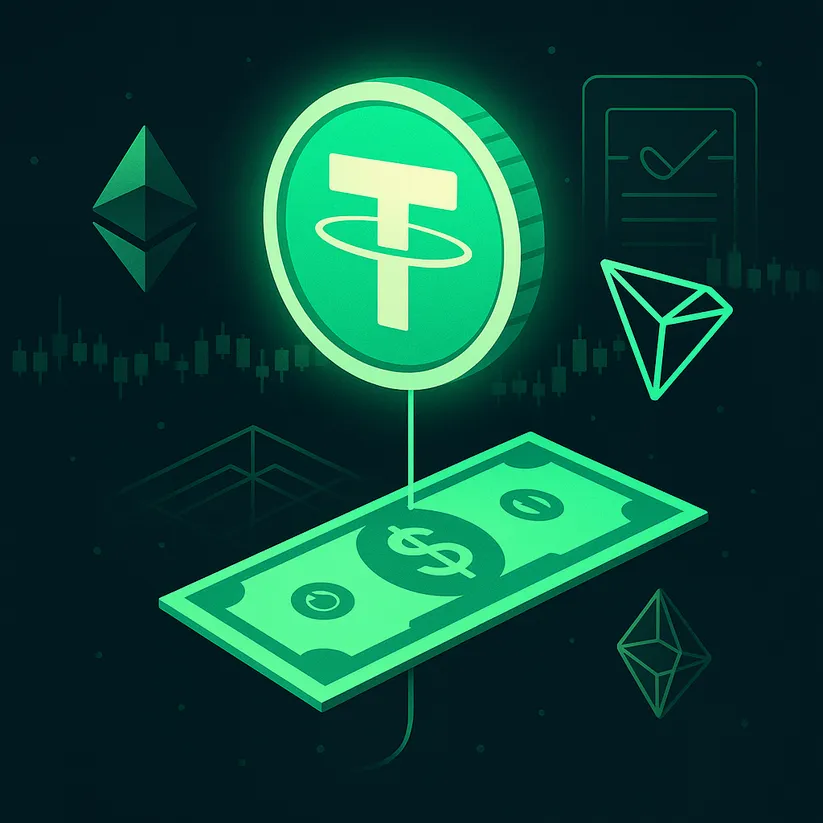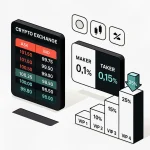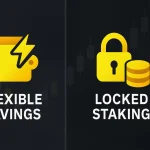Tether (USDT) is the most traded cryptocurrency in the world by volume, a stablecoin designed to hold a steady value of roughly 1 USD per token. If you’ve ever asked yourself “What is Tether(USDT) and why does it matter?” this essential guide breaks down the mechanics, the benefits, the risks, and the best ways to use it in everyday crypto life.
Quick note: If you plan to buy or trade USDT, you can start on Bitget and use the referral code cryptonew0 for perks available during promotions.
What is Tether(USDT) in plain English
USDT is a “stablecoin”—a crypto asset whose price is intended to remain close to $1. It is issued by Tether Limited, and it circulates across multiple blockchains including Ethereum (ERC‑20), Tron (TRC‑20), and others. The goal is simple: combine the speed and borderless nature of crypto with the familiarity of a dollar-like price.
Why people use it:
– Price stability for trading and savings during crypto volatility
– Fast, low-cost transfers compared with traditional remittances
– A reliable quote currency across exchanges and DeFi
– On- and off-ramps for fiat-to-crypto markets
USDT’s promise is dollar-like convenience without bank hours, wire delays, or cross-border friction.
How Tether works under the hood
At its core, Tether issues new USDT tokens when customers deposit dollars (or equivalents) and destroys tokens when they are redeemed. To back these tokens, Tether says it holds reserves—primarily short-term U.S. Treasury bills and cash equivalents—supported by monthly third-party attestations.
Key mechanics:
– Issuance: Authorized customers send fiat or equivalents to Tether and receive newly minted USDT.
– Redemption: Authorized customers return USDT to Tether to receive fiat back at roughly 1:1.
– Reserves: Per Tether’s public reports and attestations, reserves consist mainly of cash, cash equivalents, and short-dated U.S. Treasuries, plus other items such as secured loans and, in recent reports, some Bitcoin and gold holdings. Tether has stated it eliminated commercial paper exposure by late 2022.
– Attestations vs. audits: Tether publishes regular attestations (point-in-time reports by an accounting firm) rather than full-scope audits. This distinction is often part of the transparency debate.
Because USDT exists on multiple chains, you can choose a network that fits your needs. For example, TRC‑20 on Tron is popular for low fees and speed, while ERC‑20 on Ethereum offers deep DeFi integrations.
Why USDT matters to crypto’s day-to-day
- Liquidity backbone: Many crypto pairs are denominated in USDT, making it a critical liquidity rail.
- DeFi and CeFi glue: USDT acts as the “cash leg” for yield strategies, liquidity pools, lending, and derivatives margin.
- Cross-border payments: In regions with high inflation or capital controls, people use USDT informally as a dollar proxy for saving and transferring value.
- Market stability: During volatility, traders rotate into USDT to reduce exposure without leaving the crypto ecosystem.
In early 2024, USDT’s market capitalization surpassed the $100B mark, underscoring its central role in the industry’s infrastructure.
The peg, explained
The $1 peg is maintained economically, not by magic. If USDT trades below $1 on exchanges, arbitrageurs can buy discounted USDT, redeem it for $1 via authorized channels, and pocket the difference. If it trades above $1, they can mint new USDT (by depositing dollars) and sell it on exchanges, pulling the price back toward parity.
Short-term deviations can occur due to exchange liquidity, market stress, or delays in redemption pipelines, but historically, arbitrage and redemptions have pulled USDT close to its intended peg.
What is Tether(USDT) without discussing risks
No stablecoin is risk-free. Before you rely on USDT, understand the trade-offs:
- Reserve composition and transparency: Although Tether publishes regular attestations (by BDO Italia in recent years), critics argue for full audits and even more granular transparency. The mix of assets (e.g., Treasuries, cash equivalents, secured loans) matters for liquidity in stress events.
- Counterparty and banking risk: USDT’s ability to honor redemptions depends on banking relationships and settlement rails. In times of stress, even safe assets can be slower to liquidate.
- Regulatory and legal landscape: Stablecoins are under evolving regulatory frameworks globally (for example, EU’s MiCA regime and various proposals in the U.S.). Regulatory shifts can impact operations, issuance, and redemption.
- Smart contract and chain risk: Each blockchain introduces its own risks—from network congestion to potential smart contract bugs or chain-specific outages.
- Censorship and blacklist controls: Tether can freeze addresses to comply with law enforcement requests. This makes USDT more compliant-friendly but introduces censorship risk.
- Market liquidity risk: On smaller exchanges or pairs, thin liquidity can cause price slippage and transient depegs.
Understanding these points helps you decide when and how to hold USDT versus alternatives.
USDT vs. other stablecoins
- USDT vs. USDC: USDC is issued by Circle, emphasizes U.S. regulatory alignment and transparency practices many institutions favor. USDT typically enjoys broader global usage and deeper liquidity in many markets. Choice often depends on your use case—DeFi integrations, fees, geography, and regulatory comfort.
- USDT vs. DAI: DAI is a crypto-collateralized stablecoin governed by MakerDAO. It’s more decentralized in design but can have exposure to real-world assets through its collateral. Its peg mechanics involve overcollateralized loans and governance policies.
Diversifying across stablecoins can reduce single-issuer risk.
Real-world use cases you can actually try
- Trading base currency: Park profits in USDT between trades to avoid volatility.
- Remittances: Send USDT cross-border in minutes, often at lower cost than wires. TRC‑20 is popular for its minimal fees.
- DeFi yield: Provide liquidity, lend, or stake USDT in vetted protocols. Always weigh smart contract risk and counterparty risk.
- Merchant payments: Some merchants and freelancers accept USDT for speed and global reach.
If you’re just getting started, open an exchange account and learn the basics of deposits, withdrawals, and network selection.
Step-by-step guide to buying USDT on an exchange
The fastest way for many newcomers is a trusted exchange with fiat on-ramps. Try Bitget and apply referral code cryptonew0 during sign-up if a promo is active.
Steps:
1. Create an account on Bitget.
2. Complete KYC for higher limits and smoother fiat deposits.
3. Deposit fiat via bank card, transfer, or third-party payment partners.
4. Buy USDT directly or trade fiat/USDT pairs.
5. Choose your preferred network before withdrawing USDT (ERC‑20, TRC‑20, etc.). Confirm the recipient network matches your sending network.
Pro tip: For small, frequent transfers, TRC‑20 is common due to low fees. For DeFi on Ethereum, ERC‑20 is often the standard.
How redemptions and on-exchange liquidity interact
You don’t need to redeem with Tether to get $1 worth of value. Most users simply trade USDT for other assets or local currency on exchanges. Authorized users can redeem at 1:1 at the issuer level; everyone else relies on exchange order books and market makers. When redemptions are flowing smoothly behind the scenes, exchange prices tend to stay glued to $1.
Transparency, attestations, and what to watch
To track USDT’s health and transparency:
– Read monthly reserve attestations from Tether’s appointed accounting firm.
– Watch changes in reserve composition (e.g., Treasuries, cash equivalents, secured loans) and the size of “excess reserves.”
– Monitor chain distribution. If one network faces issues, liquidity can migrate to others.
– Follow regulatory developments in the EU, U.S., and key jurisdictions.
Investors and builders often weigh the trade-off between USDT’s massive liquidity and their preferred transparency standards.
Fees, networks, and practical details
- Networks: ERC‑20 (Ethereum), TRC‑20 (Tron), plus others like BNB Chain, Solana, and more. Support varies by exchange and wallet.
- Fees: Exchange withdrawal fees differ per network. TRC‑20 is usually cheapest, ERC‑20 can be higher due to gas costs.
- Confirmations: Each chain has its own block times and confirmation needs. Always check the destination’s requirements.
- Decimals: USDT typically uses 6 decimals on several chains; verify within your wallet and contract details to avoid confusion.
- Contract addresses: Only interact with official token contracts listed by the issuer or reputable sources. Counterfeit tokens are common.
Security checklist for USDT users
- Double-check networks: Sending ERC‑20 USDT to a TRC‑20 address (or vice versa) may result in loss of funds.
- Verify addresses and tags: Some exchanges require a memo/tag. Missing it can delay or lose a deposit.
- Use hardware wallets for larger amounts and enable 2FA on exchanges.
- Start with a small test transaction when sending to a new address.
- Beware of fake airdrops, phishing links, and impersonation scams.
Where USDT’s story goes from here
Stablecoins are converging with traditional finance. Policymakers are crafting clearer rules, and market demand for digital dollars keeps growing. As interest rates and macro conditions shift, reserve yields, risk management, and transparency standards will stay in focus. USDT’s dominance, network effects, and liquidity could endure—so long as redemptions, compliance, and reserves keep market confidence intact.
Builders will continue weaving USDT into payments, gaming, DeFi credit, and real-world assets. Users will keep favoring low-friction tools that feel like money, not like a science project. If you need the utility today, it’s hard to ignore USDT’s sheer reach.
Frequently asked questions about USDT
- Is USDT fully backed? Tether states USDT is fully backed by reserves, with monthly attestations. Critics seek more detailed, audit-level disclosures. Always review the latest reports.
- Can Tether freeze my USDT? Tether can freeze addresses in response to law enforcement or compliance requirements. This can help recover funds from hacks, but it also introduces censorship risk.
- Why does USDT sometimes deviate from $1? Exchange liquidity imbalances, market stress, and redemption logistics can cause transient discounts or premiums. Arbitrage typically restores the peg.
- Which USDT network should I use? For DeFi on Ethereum, ERC‑20 is common. For fast, low-cost transfers, many choose TRC‑20. Always match sending and receiving networks.
- How do I redeem USDT for dollars? Direct redemption is for authorized customers of Tether. Most users swap USDT for fiat on exchanges instead.
Get started with USDT today
If you want to buy, trade, or transfer USDT with minimal friction, open an account on Bitget. New users can apply the referral code cryptonew0 when signing up, and check the platform for any active rewards or fee discounts.
- Fast account creation and KYC
- Wide USDT market pairs
- Multiple networks supported for deposits and withdrawals
- Deep liquidity for spot and derivatives
Whether you are trading daily or sending money globally, having USDT in your toolset can make crypto simpler and more predictable.
Disclaimer: This article is for educational purposes only and not financial, legal, or tax advice. Always do your own research and consider your risk tolerance before using or holding stablecoins.





